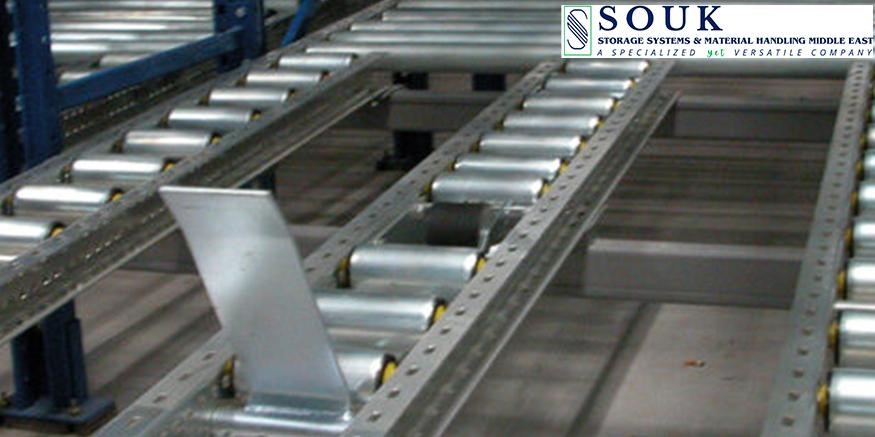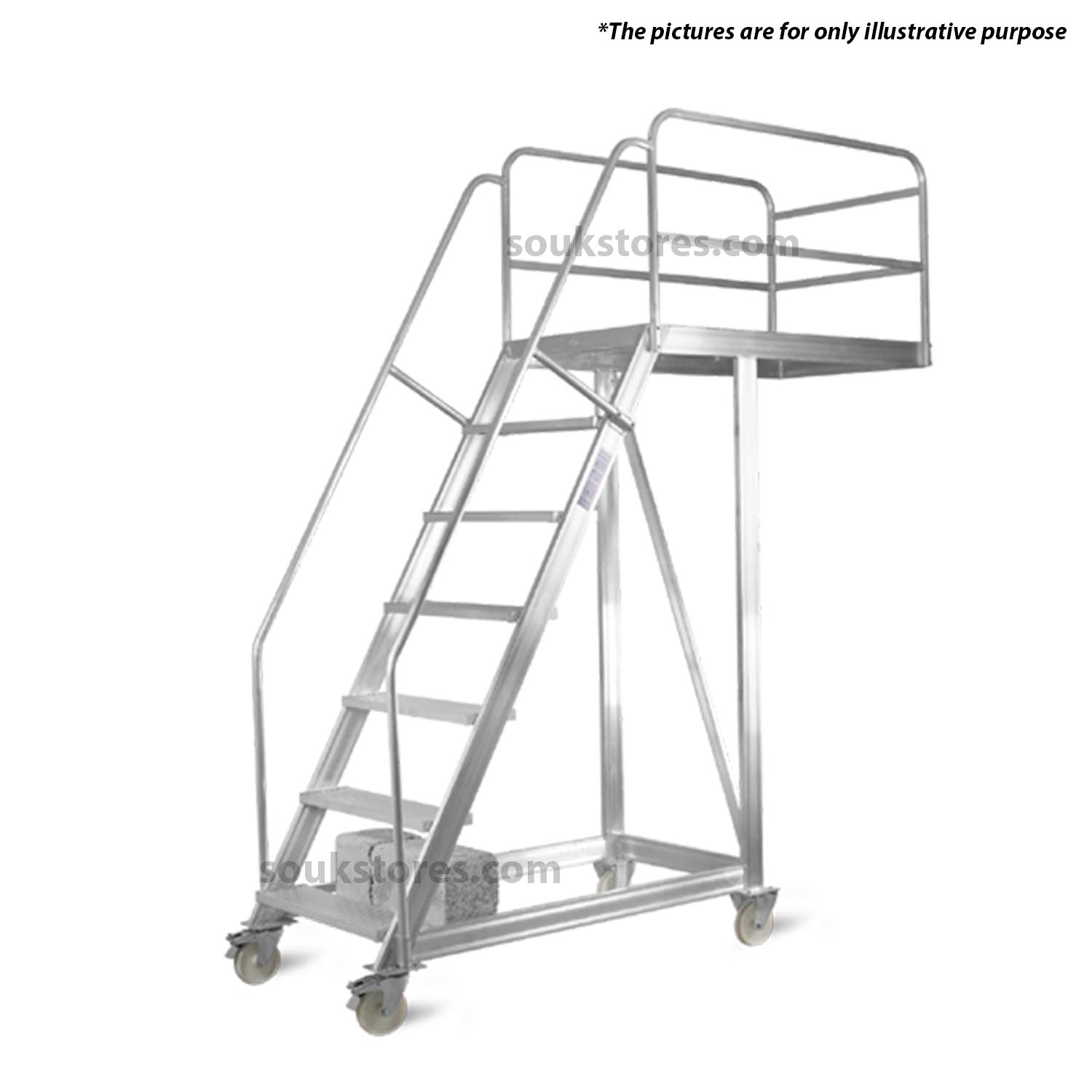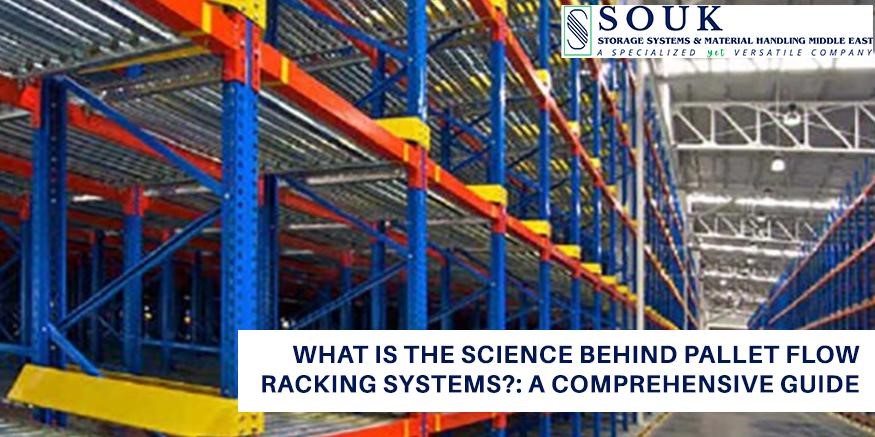Achieving efficient warehousing is a key element of an efficient logistics and supply chain process. It’s the core of all businesses, enabling the management and distribution of items seamlessly. In today’s highly competitive marketplace, the ability to efficiently and efficiently move products within the warehouse could be the difference between a business’s profitability.
What are Pallet Flow Racking Systems?
Pallet flow racking systems are created to increase the efficiency of warehouses. It’s a revolutionary solution that uses gravity to move items inside a storage space. This approach ensures that products are rotated per the FIFO (First-In First Out) principle, crucial to efficiently managing perishable items or goods with expiration dates.
Purpose and Scope of this Guide
This article aims to delve into the scientific basis of pallet flow racking systems, providing a thorough understanding of how they work, why they’re so important, and how they aid in the optimization of warehouses. We’ll look at the fundamental research, design, flow dynamics, and even the sustainability aspects of the system.
Additionally, we’ll discuss security protocols and maintenance to ensure the system’s continual safe operation. In a world where speed and accuracy are essential, effective warehouse management, aided by technological advances like pallet flow racking, is no longer an option but an essential requirement. At the end of this guide, you’ll be armed with an understanding of the research, advantages, and applications of pallet flow racking, helping you make educated choices regarding using this technique for your warehouse requirements.
Pallet Flow Racking Basics
In the complicated logistics and warehousing industry, efficiency is key, and the choice of storage solutions can dramatically influence how a company operates. One of the systems that has gained a lot of attention due to its effectiveness and efficiency is pallet flow racks. Let’s look at the fundamentals of this storage method and find out what makes it different.
Understanding the Components
Pallet flow racks comprise various important components that work in tandem to simplify warehouse operations. They typically comprise inclined rollers or wheel tracks and lanes that connect to exit and entry points and speed control. The products are loaded at the top of the rack and transferred down the lanes through the gravitational force. The system works using the First In, First Out (FIFO) method, which ensures that the older items are distributed first, making it perfect for products that are perishable or sensitive to time.
How Pallet Flow Racking Systems Differ from Other Systems

Pallet flow racking differs from other storage methods, like traditional selective racking, due to its dynamism. Although selective racking requires forklifts to access items, pallet flow racks permit a continuous flow of products, making it ideal for high-density storage. Unlike static systems, pallet flow racking functions as a well-choreographed dance that allows products to glide effortlessly across the lanes to waiting customers, reducing the need for employees to travel through the warehouse.
Key Advantages and Benefits
The benefits of pallet flow racks are numerous. This innovative system optimizes space utilization by providing high-density storage options crucial for warehouses with a small space. Its FIFO process ensures that perishable items are kept fresh, thus reducing the possibility of wasting. Additionally, it reduces manual labor requirements, increasing productivity while decreasing operating expenses. If efficiency is important, pallet flow racking systems could be the solution.
Integrating pallet flow racks into your warehouse can transform your distribution and logistics. The storage system is created to increase efficiency, cut down on the cost of labor, and optimize space and space, making it an excellent choice for businesses looking to simplify their warehousing processes. With these fundamentals in mind, Let’s go on our way to the science field and the applications available to pallet flow racking systems.
The Core Science of Pallet Flow Racking System
When it comes to the pallet flow racks, understanding the fundamental science behind their operation is essential. The systems are designed to make the most use of gravity and provide an efficient and flexible storage solution. Let’s examine the main scientific principles driving pallet flow racking systems.
Gravity as the Driving Force
The principle of the base that drives pallet flow racks is gravity. The products are loaded onto one side of the rack, typically at a higher level, and gravity handles the remainder. As the items travel down the inclined narrow lanes, they will naturally slide or roll to the lower portion of the rack. This dependence on gravity makes this system extremely efficient since it reduces manual or mechanical handling requirements. It’s a non-stop, constant procedure that allows inventory to flow easily.
How Carton Flow and Pallet Flow Differ

Although both the pallet flow and the flow of carton systems rely on gravity as the motor, they have distinct purposes and can handle various kinds of items. Carton flow racks are designed to handle smaller items or cartons loaded on one side and gently rolled to the picking surface for quick access.
Pallet flow racks are, however, designed to fit the full pallets of merchandise. Pallets are loaded on the rack and pushed through the lanes, ensuring an efficient storage system and retrieving heavier loads. Understanding the differences is vital when selecting the ideal solution for your specific requirements in warehousing.
The Role of Rollers and Wheels
Wheels and rollers are the unspoken icons of the pallet flow rack. These are strategically placed in the lanes to ensure the smooth movement of pallets and cartons. The wheels’ or rollers’ spacing and design are crucial to regulating the flow speed and guaranteeing uniform weight distribution. This precise engineering ensures the equipment moves at the right speed while maintaining control and security inside the structure.
Pallet Flow Racking Design: The Blueprint for Efficiency
Making a good pallet flow rack is a complicated procedure that requires careful consideration of various elements to ensure the best functionality. Let’s look at the essential components of pallet flow rack design, focusing on the elements that affect it, the possibilities for configurations, and the options for customization.
Factors Influencing Design
A variety of crucial elements determines the design of pallet flow racks. Most important of all is the type of goods that are stored. The weight, size, and kind of product determine the necessary layout of the lane, its width, and roller wheel specifications.
In addition, the speed of the products that must flow through the system and the desired storage density are significant in the system’s design. Environmental factors, like humidity and temperature, should be considered for specific products. Finally, the space for storage and budgetary constraints are crucial factors determining the design.
Configurations and Layouts
Pallet flow racking is designed in many ways to satisfy the particular requirements of a warehouse. Two typical configurations are single and multiple-lane systems. Single-lane systems work well for smaller warehouses and applications with a limited product range.
Multiple Lane systems, on the other hand, offer greater flexibility, allowing various products to be stored and accessed quickly. Additionally, the designers need to determine the number of levels, the angles of the slope, and the position of the exit and entry points for a smooth flow of pallets. The selection of these components will depend on the particular demands of the particular warehouse.
Customization Options
The attractiveness of pallet flow rack design is in its adaptability. The systems can be tailored to meet the particular requirements of warehouses. The customization could involve changing the lane configurations to accommodate various dimensions of goods or adding speed control devices to control the flow of pallets.
Designers may also integrate lane dividers or impact plates to increase security and shield this system from wear and tear. Additionally, the system’s appearance could be customized to fit the overall layout of the warehouse.
Flow Dynamics in a Pallet Flow Racking System

Understanding the flow patterns within the pallet flow racking system is vital to maximize efficiency and ensure that you have an efficient warehouse functioning. This article will examine how products move through the system, the FIFO (First In, First Out) principle, and the best way to optimize flow to ensure the most efficient performance.
How Products Move Within the System
The Pallet flow rack system is an amazing illustration of precision engineering. They use gravity to aid in moving goods within the storage lane. When the pallet is loaded on the top of the rack, it slowly glides along the inclined lanes and is guided by specially located wheels or rollers. The product flow is constant and efficient and eliminates the need for manual or mechanical assistance.
The flow dynamics are controlled by the design of the system, such as angles of incline and angle, the distance of wheels or rollers, and the kind of product that is stored. All of these elements ensure that the goods move smoothly through the lane and get to their final destination in a precise manner.
FIFO (First In, First Out) Principle
One of the main benefits of pallet flow racking systems is that they adhere to the FIFO principle. This is essential when dealing with perishable or time-sensitive products. FIFO ensures that the first pallet to be loaded to the machine is the first to be recovered. When products are moved down lanes, the older ones are dispensed first, reducing the possibility of waste and spoilage. This is a huge benefit in industries like food and beverage, where quality and freshness are crucial.
Optimizing Flow for Maximum Efficiency
To maximize the flow of fluids in the pallet flow rack system, you must consider various factors. The first is that the system must be designed to meet the particular requirements of the stored items. This is a matter of lane layout along with the width of the lane and the position of exit and entry points. The right spacing and the type of materials of wheels or rollers are also crucial in managing flow speed and minimizing friction.
Regular maintenance is crucial in ensuring that the system operates optimally. Making sure the rollers and wheels are clear of obstructions can prevent interruptions to the flow. Also, monitoring and adjusting the system when the warehouse demands change can aid in maintaining the efficiency of the warehouse as time passes.
Comparing Pallet Flow Racking to Other Systems: Making Informed Warehouse Choices
Choosing the best storage solution to store your inventory is a critical choice that will significantly impact your business’s efficiency. Pallet flow racking, a dynamic storage system powered by gravity, is a unique method for warehouse storage compared to traditional racks. In this article, we’ll discuss how pallet flow racking differs from conventional racking and how to select the one best suited to your requirements.
How Pallet Flow Racking Compares to Traditional Racking

Pallet Flow Racking
1. Dynamic and Gravity-Driven: Pallet flow racks are dynamic and use gravity to move items through inclined lanes. This eliminates the requirement for forklifts to reach products, which makes it extremely efficient while reducing the cost of labor.
2. High-Density Storage: Pallet flow racks optimize space utilization and provide high-density storage solutions. It’s a great option for warehouses with little space or looking to make the most of their storage space.
3. FIFO Principle: The method is based on the First In, First Out (FIFO) principle, which is essential in managing perishable products or items with expiration dates.
Traditional Racking
1. Static and Forklift-Dependent: Static and Forklift-Dependent racks require forklifts to perform loading and retrieval. This makes them less effective in labor and operating expenses.
2. Limited Space Optimization: Traditional rack systems might not utilize space most effectively because of aisles and static layouts.
3. Less Ideal for FIFO: Some traditional systems can be converted to FIFO; however, this is not their main design element, which makes them unsuitable for perishable or time-sensitive goods.
Choosing the Right System for Your Needs
Picking between pallet flow racking and traditional rack systems depends on your warehousing requirements. Take into consideration the following:
1. Product Type: If you handle perishable products, pallet flow racking is the best choice because of its FIFO operation. Traditional racking is a better option for non-perishable goods.
2. Available Space: Consider the layout of your warehouse and the space you have available. Pallet flow racks excel in maximizing storage density, whereas traditional rack systems could have more room on floors.
3. Labor Costs: Consider the cost of labor for operating a forklift. Pallet flow racking can reduce work requirements, which makes it an economical choice.
Conclusion
Effective warehousing is essential to successful logistics. Pallet flow racking, powered by gravity, can provide storage with high density along with FIFO principles. Compared to conventional systems that rely on forklifts, a pallet flow rack minimizes the cost of labor and maximizes space. It depends on the type of product, space, and factors affecting labor. Make an informed decision to increase the efficiency of your warehousing.






